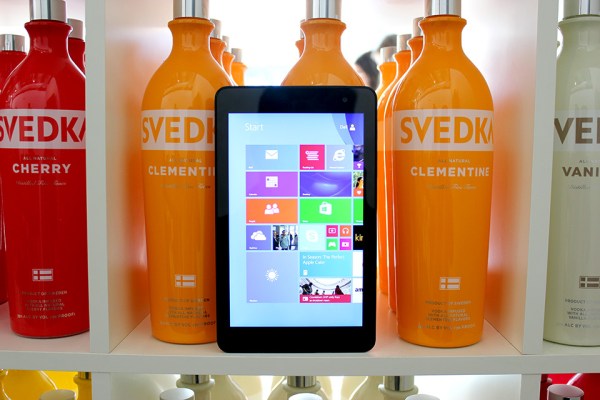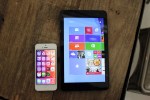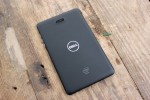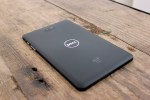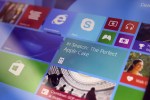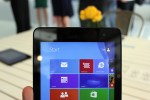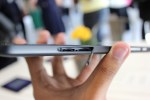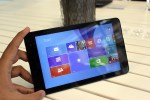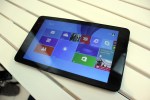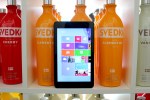The most pleasant surprise to come out of Dell’s press conference the other day wasn’t its line of new laptops or the silly Android tablets it’s trying to foist on weary consumers. To my utter shock it was the Venue 8 Pro, the company’s first pint-sized Windows 8 tablet.
Let’s start with its looks. The lightweight, plastic body screams “generic,” and you’d be hard-pressed to differentiate it from the Android-powered cousins we looked at earlier. That’s not to say it’s completely devoid of nice touches, though: The back plate features a pattern of concentric circles that break up the monotony of an otherwise plain soft-touch finish and seems to help with grip. The Venue 8 Pro is unexpectedly light, too, as it weighs a relatively scant .87 pounds — that’s well within striking distance of the iPad mini.
That said, the Venue 8 Pro suffers from a distinct lack of style. It’s perhaps to be expected considering that this is Dell’s first attempt at bringing a full-on Windows 8 experience to a device like this, and there’s a lot that could go wrong with this sort of endeavor. Take the screen, for instance. One of my favorite reviews ever written features Paul Thurrott just eviscerating Acer’s Windows 8-powered Iconia W3 tablet for its godawful screen. Some may say he was too heavy-handed in his criticism, but when the primary means of consuming and interacting with your content just sucks, something is very very wrong.
Thankfully, early stinkers like the Acer make Dell’s approach seem all the more palatable. The Pro’s IPS screen — which ran at 1280 x 800 — was bright and well-saturated, and viewing angles seemed more than respectable during the brief moments I spent playing with the thing.
Of course, the screen’s size poses some issues. There’s no denying that parts of Windows 8.1 just aren’t suited for such small displays. The classic desktop mode is cramped and festooned with tiny icons that require a fair amount of dexterity to poke at accurately. Dell plans to downplay some of those issues by selling an active stylus that allows for precise manipulation of screen elements — I took that thing for a spin too and came away impressed. Part of the stylus’s appeal is because Dell fought the urge to make it small enough to slot into the Venue’s chassis. Instead the company opted to make a full-sized pen, which helps dramatically with usability (though you’ll have to tuck it into a case or a pocket).
And then there’s longevity to consider. I’m told that the battery is slated to last between 8 and 10 hours of normal use (whatever that is). That wouldn’t amount to much if this thing wound up trading off performance for power, but the whole package seemed suitably snappy thanks to its 1.8GHz quad-core Intel Bay Trail chipset. We’ll see if that remains the case once the final devices start trickling out into the wild.
After being let down in such a big way by Microsoft’s original Surface RT, I thought I’d never splurge on a Windows tablet again. Now, after having played with Dell’s attempt, I find myself rethinking my earlier position. The prospect of running full Windows apps on a device this light and this cheap is a terribly attractive one, and at this moment Dell’s tiny tab seems well-equipped to take on what few Windows competitors are playing at this size. I may even buy this thing over the iPad mini, which is yet another thing I never thought I’d say. Stay tuned for the full review in short order.
